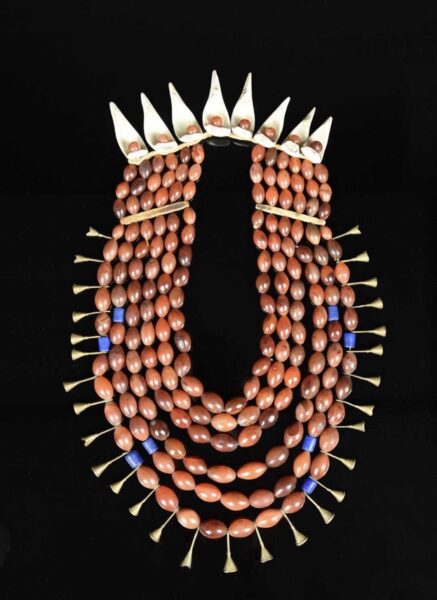A collection of jewellery from Nagaland, a region in Northeast India, will be auctioned by Woolley & Wallis on 19 February 2025. The sale is part of the Arts of Africa, Oceania and the Americas auction and includes handcrafted pieces reflecting the cultural traditions of the Naga people.
A Collector’s Lifelong Interest
The collection belongs to art publisher and artist Hansjörg Mayer, who has spent 50 years acquiring jewellery and artefacts from the region. His interest began when friends purchased a Naga artefact at auction, which he later acquired from them. This led to a long-term focus on Naga craftsmanship.
“There was little known about Nagaland and its indigenous people in the 1970s when I began collecting,” Mayer stated. “A state in India’s northeast region, it is remotely situated among the hills and mountains bordering Myanmar to the east, Arunachal Pradesh to the north, Manipur to the south and Assam to the west. Not only was it difficult to get to, due to the terrain, but was also difficult politically and therefore impossible to obtain travel documents for, so I disappointingly never got to go and see anything first-hand, even though I tried.”
Mayer sourced his collection through antique dealers, auction houses, and Naga traders. “Having treasured his pieces for over 50 years, it is now time to pass his collection on to others, that will hopefully appreciate them as much as he has,” he said. His collection has been featured in The Nagas: Hill Peoples of Northeast India, a 1990 publication produced in collaboration with Thames & Hudson.
Cultural and Artistic Significance

The Naga people, an indigenous group in Northeast India and parts of Myanmar, have a long tradition of jewellery-making. Each tribe had distinct styles and motifs, with jewellery playing an important role in social identity. Some pieces feature human head motifs, referencing the region’s warrior history.
Naga jewellery was traditionally made from materials such as carnelian, conch shells, coral, and glass beads. Men’s jewellery often incorporated weapon-inspired elements or animal parts, while women’s jewellery was primarily decorative. Beaded necklaces were commonly worn and also used in dowries or as heirlooms.
Mayer explains that the Naga people “practiced exceptional craftwork and jewellery-making led the way. Each ancient tribe in Nagaland had a different style of jewellery that would help identify them. Worn by both men and women, jewellery bore symbols and motifs that had a deeper meaning. The head is shown in many pieces, with the belief that the head holds all spiritual divinity in a body. It also alludes to the more sinister ritual of head-hunting, as the Naga men were warriors.”
Key Pieces in the Auction
Mayer’s collection includes beaded necklaces, armlets, torques, and ear ornaments, showcasing the craftsmanship of Naga artisans. Notable lots include:
- A woman’s necklace with carnelian beads, bone spacers, and brass bell pendants (Estimate: £1,500–£2,000, Lot 35).
- A set of six brass spiral armbands, decorated with linear and lozenge patterns (Estimate: £300–£500, Lot 61).
- A brass warrior’s torque, featuring two heads and nine disc protrusions (Estimate: £200–£300, Lot 86).
- Beaded necklaces composed of orange and blue glass beads, brass bells, coins, and a shell pendant (Estimate: £200–£300, Lot 38).
- Naga ear ornaments made from brass, coloured glass beads, and bell pendants (Estimate: £150–£250, Lot 72).





